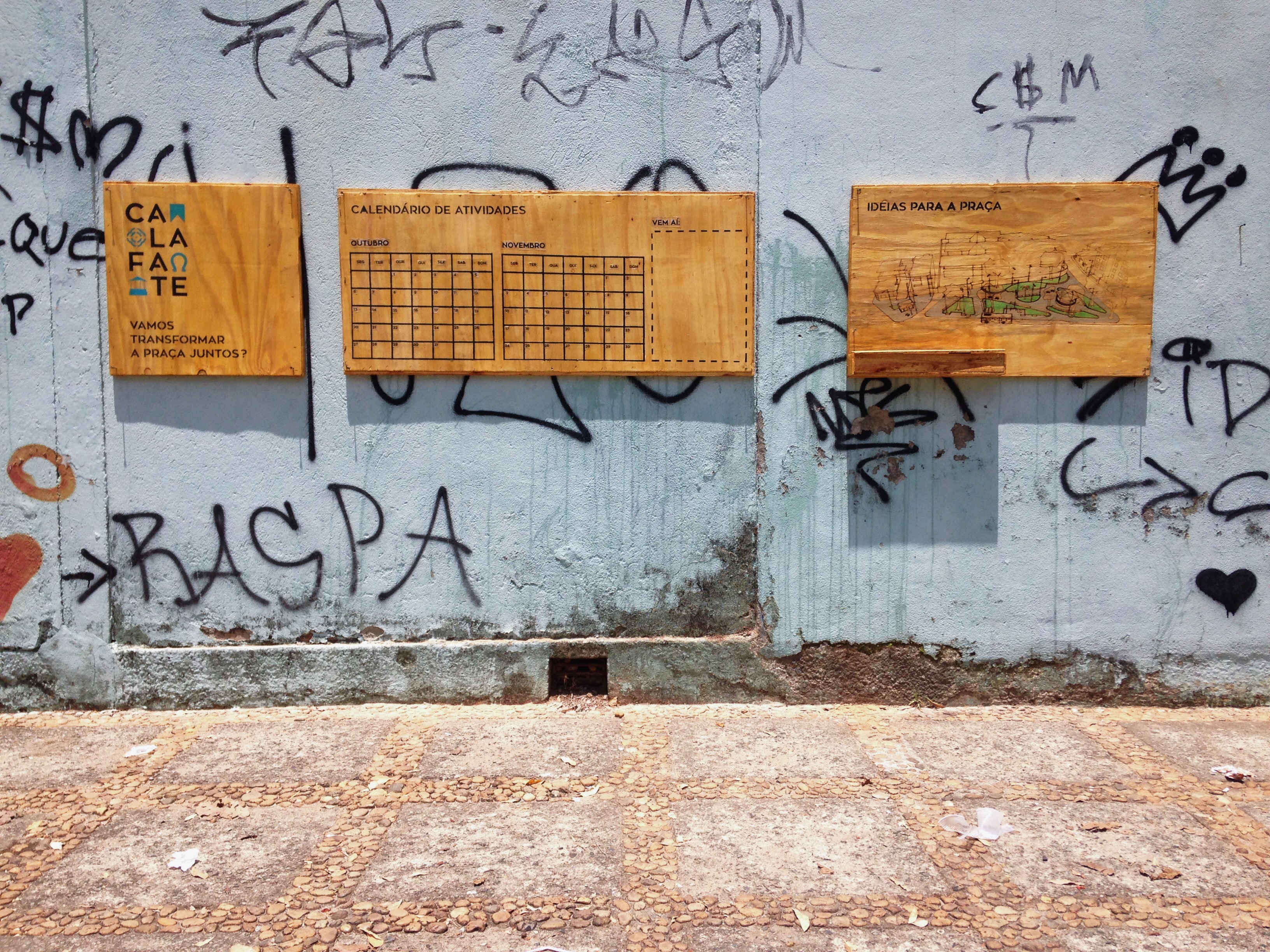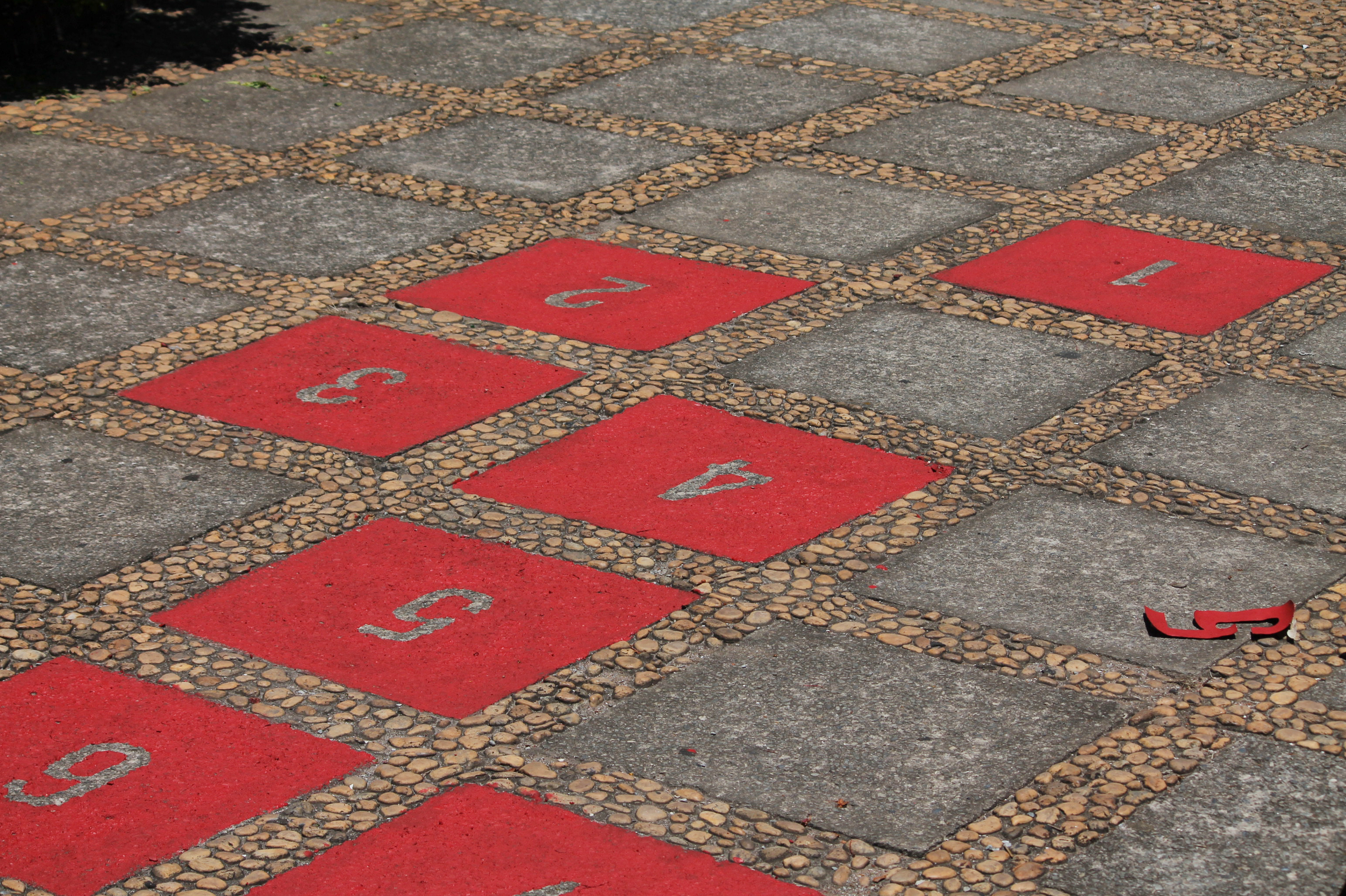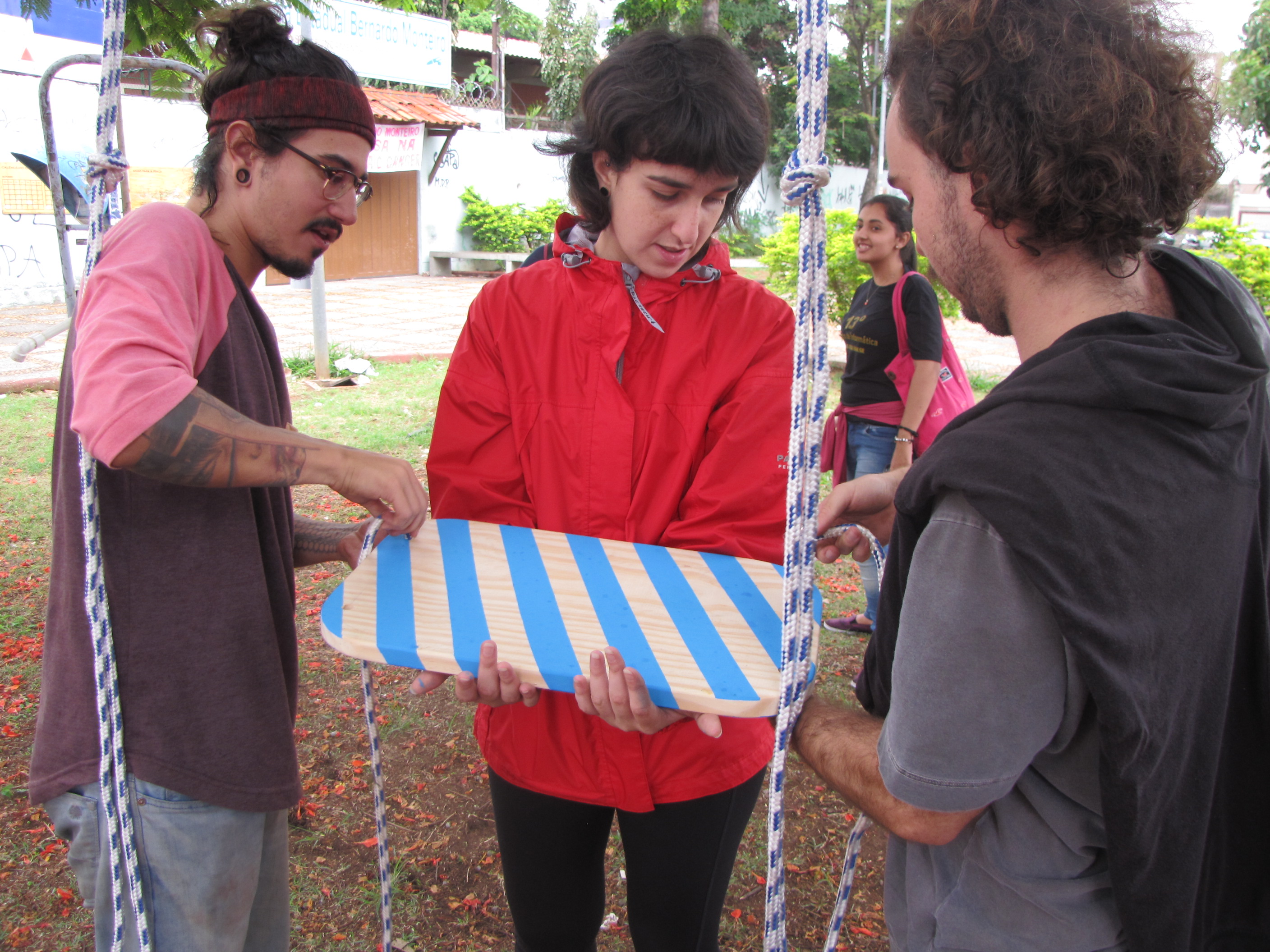CALAFATE
In February 2014, Micrópolis installed itself in Calafate, a neighborhood in the western region of Belo Horizonte, where research, experiments and projects were carried out in conjunction with local partners, residents, merchants and the university. As we investigated the emerging cultural and political practices of the neighborhood, we sought to test processes that help increase the collective use of public space through a series of micro-architectural and graphic initiatives.
We structured our immersion methodology in the neighborhood in three moments, which are listed below. They are not divided chronologically, nor hierarchically, but are simultaneous, in order to allow interference between them.
Please click here to read the book that compiles all of the processes involved.
SPACE, EDUCATION, DESIGN
Investigation and urban interventions carried out by Micrópolis during one year in the Calafate neighborhood, in Belo Horizonte, Brazil.
November 2014
Belo Horizonte, Brazil

1.Perceive the invisible
Through a series of conversations, we discovered and documented the invisible socio-spatial nuances and practices of the neighborhood, as well as what is perceptible to the eye at different scales — from neighborhood sidewalks to existing cartographic bases.
 2.Investigate through action
2.Investigate through actionBy collaborating with existing local events, we proposed hybrid activities that were used to simultaneously collect information about the neighborhood and activate collective spaces through social events.

3.Fill in the gaps
From questions formulated by the mappings and actions carried out previously, the third moment proposes the experimentation of a system of projects that aim at reclaiming public space in the neighborhood.
1. PERCEIVE THE INVISIBLE
At first, we collected all geographic databases for urban planning available for the neighborhoods Calafate and Prado. However, we also wanted to discover and understand the socio-spatial practices that are initially invisible.
Through many conversations, we observe, introduce ourselves and exchange experiences with strangers, conduct semi-structured interviews with neighborhood experts and experience day-to-day practices on site. Here, the neighborhood is understood not as an object of study, but rather as a study environment, where everyday life is an alternative to the official history, revealing the new layers of potential and impasses of the territory.

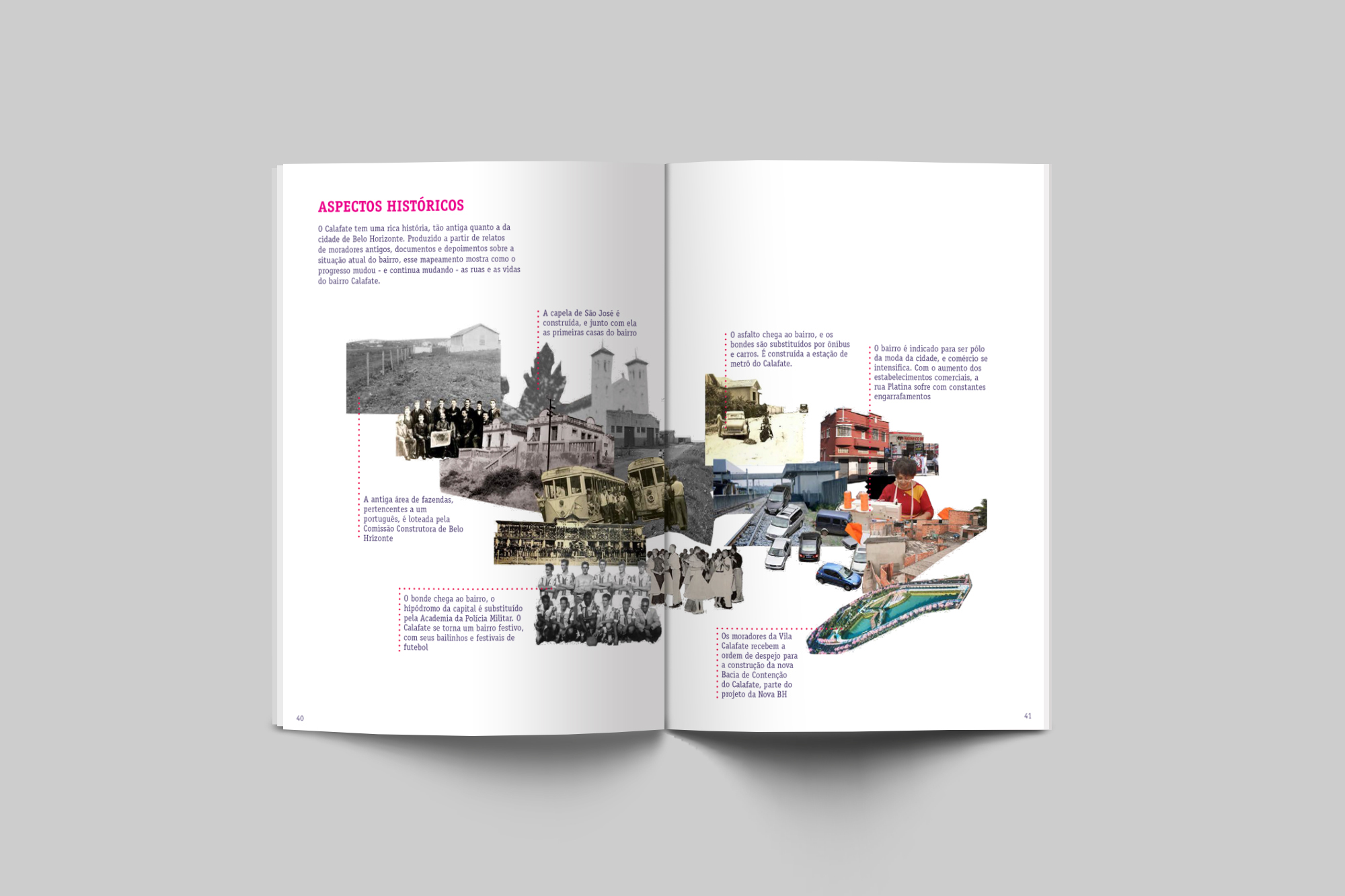



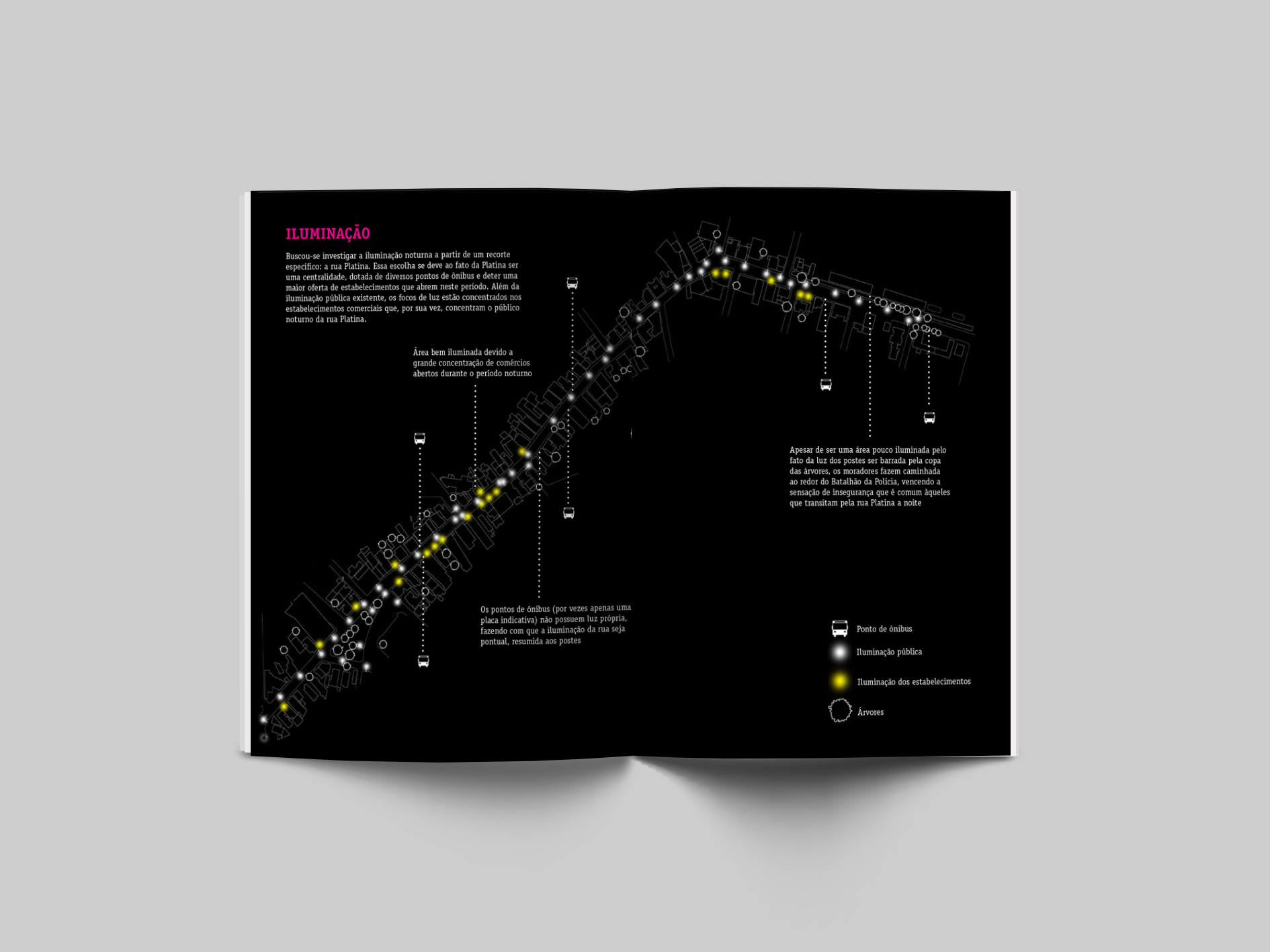
2. INVESTIGATE THROUGH ACTION
We participated in existing neighborhood events to initiate dialogues with residents and propose actions that, in addition to informing us more about the territory, nurtured possibilities for activating certain spaces. We took part in events organized by residents and local institutions, getting involved in existing discussions and demands. Through quick workshops, we were able to get informed about the territory, existing networks of affection and cooperation, memories and dreams for the neighborhood. After all, the most knowledgeable about the place are exactly those who inhabit it. At the same time, these actions highlighted aspects that, due to lack of systematization, go unnoticed by the inhabitants. When this information became public, a process of exchanges, debates, disagreements and future projections for the neighborhood were initiated.

PHOTOGRAPHY WORKSHOP
In order to discuss with students from the local school how photography can reveal complex dynamics of the city when one is willing to observe and investigate, we invited a group of students to participate in a photography workshop. The workshop began with the presentation of six thematic axes that covered our concerns about the neighborhood in an accessible language — architecture, nature, leisure, food, reuse and portraits. After voluntarily choosing one of the axes presented, the students went out through the neighborhood, dissecting the everyday landscape through photography. Two days later, the photographs and the routes were exhibited at the school, when students and local residents discussed the landscapes surrounding the school.
In order to discuss with students from the local school how photography can reveal complex dynamics of the city when one is willing to observe and investigate, we invited a group of students to participate in a photography workshop. The workshop began with the presentation of six thematic axes that covered our concerns about the neighborhood in an accessible language — architecture, nature, leisure, food, reuse and portraits. After voluntarily choosing one of the axes presented, the students went out through the neighborhood, dissecting the everyday landscape through photography. Two days later, the photographs and the routes were exhibited at the school, when students and local residents discussed the landscapes surrounding the school.

BREAKFAST
Initially proposed by the resident’s association as a strategy to destigmatize students and the local public school, this action attempted a spatial and subjective integration between the school and the neighborhood. A breakfast table was positioned through the gates of the school, symbolically crossing the wall that operates as an imposing division between the public space and the school’s premises. That Saturday morning, students, teachers, residents and curious passersby shared a collective breakfast table that was neither inside nor outside, but between places and available to anyone who wanted to join. The cups of coffee and pieces of cake triggered the beginning of several relationships between the participants, who took the opportunity to discuss ideas for the neighborhood.
Initially proposed by the resident’s association as a strategy to destigmatize students and the local public school, this action attempted a spatial and subjective integration between the school and the neighborhood. A breakfast table was positioned through the gates of the school, symbolically crossing the wall that operates as an imposing division between the public space and the school’s premises. That Saturday morning, students, teachers, residents and curious passersby shared a collective breakfast table that was neither inside nor outside, but between places and available to anyone who wanted to join. The cups of coffee and pieces of cake triggered the beginning of several relationships between the participants, who took the opportunity to discuss ideas for the neighborhood.

COLLECTIVE TIMELINE
Every year a group of residents who grew up in the neighborhood during the 1960s and the 1970s gathers in a local football field to eat, drink, dance and play. As a way of registering the memories that motivate this meeting, we proposed to install a platform in which participants could add their micro and personal stories to a timeline of major events that have radically transformed the landscape over the years.
Every year a group of residents who grew up in the neighborhood during the 1960s and the 1970s gathers in a local football field to eat, drink, dance and play. As a way of registering the memories that motivate this meeting, we proposed to install a platform in which participants could add their micro and personal stories to a timeline of major events that have radically transformed the landscape over the years.

INSTANT HOME
The Instant Home was an object exchange event that took place in the main square of the neighborhood. We invited residents of the region to bring underused objects from their homes that could be exchanged for those brought by other people. As new objects arrived and others were taken away, a living room in constant transformation was established in the middle of the square's lawn. Motivated by curiosity or informed by the pamphlets distributed the day before, some residents temporarily co-inhabited this space. Between one meeting and another, we took the opportunity to talk about the square and find out what the neighbors had to say about its uses, limits and particularities, as well as ideas about the future of the place.
The Instant Home was an object exchange event that took place in the main square of the neighborhood. We invited residents of the region to bring underused objects from their homes that could be exchanged for those brought by other people. As new objects arrived and others were taken away, a living room in constant transformation was established in the middle of the square's lawn. Motivated by curiosity or informed by the pamphlets distributed the day before, some residents temporarily co-inhabited this space. Between one meeting and another, we took the opportunity to talk about the square and find out what the neighbors had to say about its uses, limits and particularities, as well as ideas about the future of the place.

JUICE DAY
The Juice Day took place in front of the local school at the end of the school day. We set up a counter in the square with blenders and assorted fruits, which were made into fresh juices offered to those who were passing by. However, instead of being sold, one cup of juice could be exchanged for a fictitious currency that could be acquired by making a collage or drawing that imagined new uses for Casa do Calafate, a common space that belonged to everyone in the neighborhood. As they produced the collages and drawings, the participants discussed among themselves and shared their imaginations of the community space, which quickly got mixed up with ideas for improving the square where the event took place.
The Juice Day took place in front of the local school at the end of the school day. We set up a counter in the square with blenders and assorted fruits, which were made into fresh juices offered to those who were passing by. However, instead of being sold, one cup of juice could be exchanged for a fictitious currency that could be acquired by making a collage or drawing that imagined new uses for Casa do Calafate, a common space that belonged to everyone in the neighborhood. As they produced the collages and drawings, the participants discussed among themselves and shared their imaginations of the community space, which quickly got mixed up with ideas for improving the square where the event took place.
3. FILL IN THE GAPS
Despite the effervescence of Platina Street, the constant use of the Carlos Marques square, the domestic appropriations and the meetings at the doors of bars, it is evident in Calafate that over the course of years practices that happened in public space started to go indoors. This is the result, among other reasons, of the growing feeling of insecurity in the city and of imposing urban processes that, over the years and in the name of order and progress, have been inhibiting festive manifestations that populated the sidewalks, squares and fields of the neighborhood. Whether due to lack of information, fear, lack of dialogue or disbelief, we identified in the residents and regulars of the neighborhood a skepticism towards the notion of public space, which ends up compromising the notion of neighborhood itself. In response to this context, we proposed a system consisting of micro projects developed in the neighborhood that test the displacement of the notion of public space to other places, in order to question its worn-out meaning and experience the re-involvement of people in collective action processes that go beyond the walls of the private sphere towards the streets of the neighborhood.
CALFATE CINEMA
Cinema Calafate is a series of documentaries produced about the Calafate neighborhood. By superimposing testimonies, expeditions through the neighborhood and everyday life scenes, the videos highlight the plurality of perceptions, imaginaries and expectations about the public space in the neighborhood. Exhibited at night at Carlos Marques Square, the film screening was followed by a conversation on the topics covered by the documentaries, including new interlocutors in the conversations promoted by the films themselves.

ACTIVITIES AT BERNARDO MONTEIRO SCHOOL
The painting of the wall of the Bernardo Monteiro State School, part of a series of workshops with the students, aimed at attenuating the negative connotation that the structure had as a barrier between the school and public space, seeking to break with the meanings of segregation, surveillance and control that it acquired over time. Even without taking the wall down, we sought to discuss, through the intervention, the possibility of a school that would dialogue more intensely with its surroundings, in addition to debating with students the relationship between space and pedagogy.
The process was initiated through a stencil workshop, an accessible and easily replicable technique. With the help of the students, we selected themes related to the school and its surroundings, from which the participants created a series of drawings. The drawings were transformed into stencil molds and used to paint the school's wall, carried out collectively by students and residents of the neighborhood over the course of three days.





FALA CALAFATE
FalaCalafate is a neighborhood newspaper edited by Micrópolis and written by the collective in partnership with the neighborhood. More than a newscast, the newspaper prints the collective imagination of the public space in the neighborhood through stories narrated by residents and collected from interviews, guided tours and personal archives.
In addition to celebrating the neighborhood’s memory, the newspaper also brings together proposals for its future, which are mapped from spatial practices already underway by residents. By publicizing these ways of living and making the neighborhood, the newspaper intends to articulate residents with compatible practices and interests, inciting processes of spatial transformation that start from the collective effort and depend less on the public policies.


CALAFATE NOTEBOOK
Caderno Calafate is a publication launched after a year of research in the Calafate neighborhood. The book compiles the mappings and texts developed during this period. The publication also contains a step-by-step manual on all the projects developed throughout the research, so they can be tested and updated and other contexts and territories.
Please click here to read Calafate Notebook.
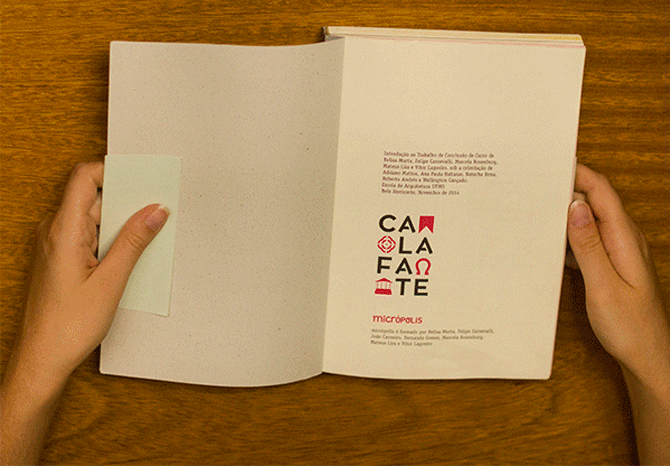
ACTIONS AT CARLOS MARQUES SQUARE
A children's playground was once part of the landscape of Praça Carlos Marques. When recalling the history of the neighborhood, older residents recalled with nostalgia when they took their children to play on the swing, slide and sports court. However, this playground was removed after a process of deterioration caused by lack of maintenance. With the decrease in the presence of children in the square, the space started to be perceived as unsafe. In an attempt to reverse this cycle, we started the gradual reconstruction of the playground, in order to reactivate the intensity of the collective experience of public space.
